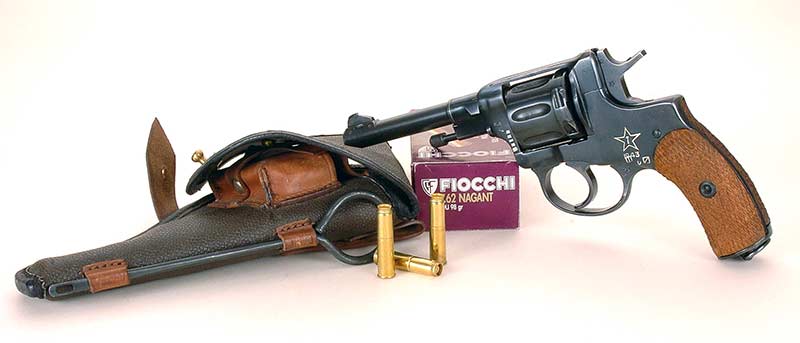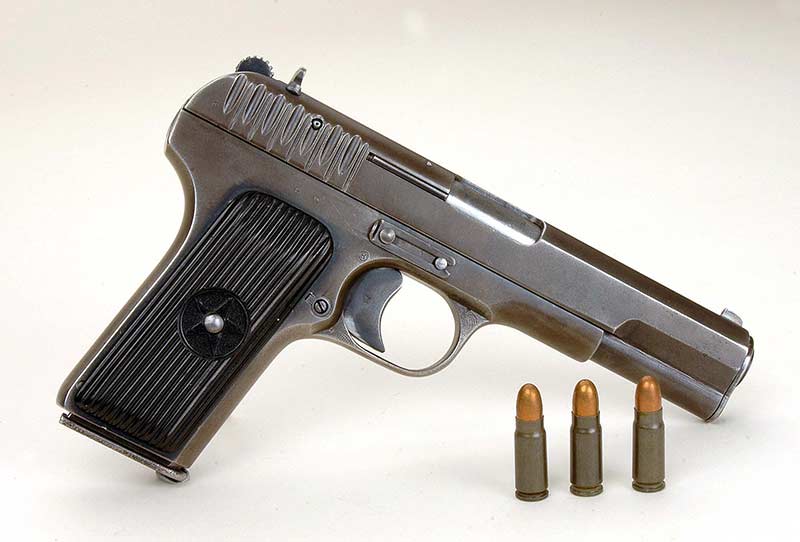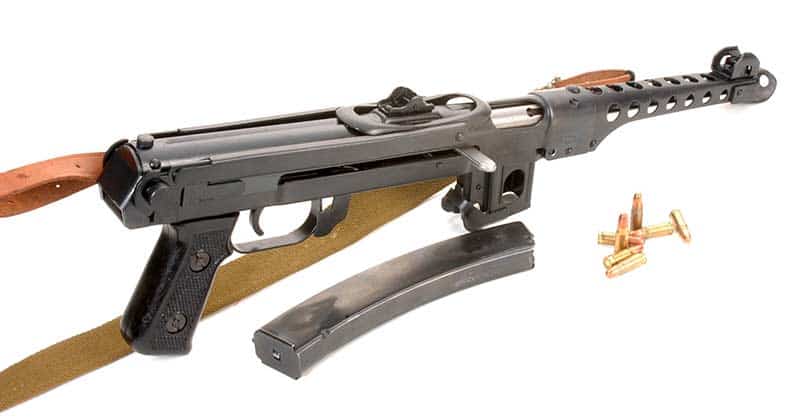Soviet Handguns
HANDGUNS OF WWII PART 11
Part 11 Of A 13-Part Series
It’s perhaps true more people were killed by Soviet handguns in World War II than by those used by any other combatant nation. At least eight, and perhaps nine, of every German soldier killed in the war fell on the eastern front. Although handguns are likely the least fired weapon in combat still that statistic means many more handguns were used by Soviets against Germans, than either Americans or Brits.
Gruesomely, however, there was another factor involved. The Soviets put far more people to death than any other nation in World War II, whether they be prisoners of war or their own troops. Their favorite cure for unwanted humans was to shoot them in the back of the neck with a handgun. At least one historian has written the Red Army shot at least 700,000 of its own troops for one infraction or the other between 1941 and 1945. That was more than the combat deaths of the United States and Great Britain combined. Regardless, the following are the two most used Soviet handguns of the world’s greatest conflict.
Model 1895 Nagant Revolver
First there was the Model 1895 7.62mm Nagant revolver, and if there was ever a silly excuse for a handgun this was it. By 1895 revolvers of far superior design had been around for decades. Despite that fact, a Belgian named Leon Nagant set about dreaming up an excellent solution to a non-existent problem. Nagant figured out a complex system where the cylinder was cammed forward every time it was rotated so its chambers actually fit over the butt-end of the barrel in order to prevent gas leakage. Therefore, the ammunition also had to be special, with bullets seated deeply in the cartridge case. Then the case mouth had to be crimped inward over the bullet so it too could fit inside the rear of the barrel.
For that reason cases were made especially long, as were the firing pins. They had to reach way forward, because the cylinder moved so far in that direction when the hammer was cocked. All that machining, fitting and special ammunition manufacture allowed the 98 gr. 7.62mm Nagant bullet to be propelled all of about 1,000 feet per second. By 1895 it was well understood a bit of gas leaking through the barrel/cylinder gap meant nothing in practical effect. Indeed the Russians themselves had bought literally tons of .44 caliber top break revolvers from Smith & Wesson in the 1870s that were far better examples of the revolver maker’s art than the Nagant.
By 1895 both Colt and Smith & Wesson made revolvers that automatically dumped all cartridges when opened, as a top-break (S&W) or with a single push of an ejector rod when the cylinder was opened to the side (Colt). The Model 1895 Nagant still loaded through a gate on the frame’s right side as did the famous Colt Peacemaker. But to empty cases on a Nagant Model 1895, an ejector rod system must be rotated to come in line with the chambers. These little gems were made in both single and double action versions. Ordinary soldiers got the single actions and officers got the double actions — at least until the Soviets took over.
The Soviets kept their Nagant revolvers in at least partial service until 1947. In all honesty I’ve fired but a single Nagant revolver from the collection of a friend. It was a double action whose trigger could only be considered horrendous, and the single action pull wasn’t so great either. Using Fiocchi factory loads I popped a surplus U.S. GI steel helmet setting on a fence post from about 20 feet. It barely wobbled and the bullet left but a tiny dent. In 1941 when the Germans invaded, the Soviets must have been truly hard up for firearms if they gave these things to people going into combat.
Model TT33
By the 1920s the Soviet Union realized a replacement was needed for the Nagant revolver, and to be up to speed it needed to be a semi-auto pistol. A firearms designer named Tokarov borrowed on the Colt/Browning 1911 and eventually came up with a model designated TT30. That meant “Tula/Tokarov 1930” with Tula being the arsenal where the pistols were manufactured. Some revisions were made in 1933 and so that name was changed to TT33.
Caliber for this new pistol was the 7.62x25mm Tokarov which was nothing more dimensionally than the old 7.63mm Mauser of “Broomhandle” fame made hotter. Do not think the similarity between the two rounds is an excuse to put the 7.62×25 Tok rounds in an old Mauser Model 1896, also known as the Broomhandle Mauser. The Russian cartridge develps higher pressures than the 7.63mm Mauser and could be dangerous in old Broomhandle pistols!
Personally speaking I find myself in the rather odd position of having fired thousands of rounds of 7.62x25mm Tokarov rounds, but only a few score through a TT33 pistol. That’s because I own a PPsh41 full-auto submachine gun and a semi-auto replica of the Soviet PPs43 submachine gun. Both were chambered for the same cartridge as the TT33.
The Soviet/Russian 7.62x25mm gave about 1,400 to 1,500 fps with 86 gr. bullets when fired from only a 4.5″ TT33 barrel. At that speed and with such a short barrel the muzzle blast is tremendous, but actual recoil from the almost two pound pistol is negligible. Sights on the TT33 are rudimentary. There is a blade front staked into the slide and a notch rear sight dovetailed into it. Magazine capacity is eight rounds and the grips are of some sort of synthetic material.
TT33s have a rather odd shape of grip, growing narrower as it descends. Also, there is no safety at all, which is also odd as far as semi-auto pistols go. After World War II many Soviet Bloc nations such as Hungary, Poland, China and North Korea also produced TT33s. Many were brought home from Vietnam. In order to import TT33s into the United States today, the importer has to alter them to have some sort of safety. This devalues them considerably, but those found in original condition bring much higher prices.
And The Winner?
Having shot my friend’s Model 1895 Nagant and his original Soviet TT33, and having reloaded for the latter pistol, I find myself not wanting to spend money on either. Perhaps someday I will go for an unaltered TT33 but never — never — for one of those ridiculous Nagants!
Click here to links to all the 13-part on-line series of Handguns Of World War 2 articles.










